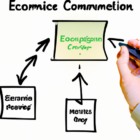By [Your Name]
Date: [Today’s Date]
In an era where technology is advancing at an unprecedented rate, digital twins have emerged as a game-changing innovation, influencing various sectors including manufacturing, healthcare, and urban planning. Digital twins serve as virtual replicas of physical assets, processes, or systems, enabling organizations to improve efficiency, reduce costs, and drive innovation.
What are Digital Twins?
A digital twin is a digital replica of a physical object, system, or process that is utilized to analyze, monitor, and optimize their real-world counterparts. With the integration of Internet of Things (IoT) devices and sensors, these virtual models can simulate and predict behaviors and outcomes in real-time, thereby facilitating better decision-making.
The Impact of Digital Twins on Industry 4.0
As part of the Industry 4.0 revolution, digital twins play a critical role in smart manufacturing. Companies can monitor equipment performance, optimize production schedules, and predict maintenance needs, leading to significant cost savings and increased operational efficiency. For example, GE uses digital twins in their aviation engines to forecast potential issues before they occur, resulting in higher uptime and reduced disruption.
Applications of Digital Twins
Digital twins have found applications across various domains:
- Healthcare: Hospitals utilize digital twins to model treatment plans and patient outcomes, enhancing the quality of care.
- Urban Planning: City planners create digital twins of urban environments to simulate traffic flows and improve infrastructure development.
- Energy Management: Utilities apply digital twin technology to optimize grid performance and enhance energy distribution efficiency.
The Future of Digital Twins
The potential of digital twins is vast, and their growth is set to continue as organizations increasingly adopt smart technologies. By providing real-time data analysis and feedback loops, digital twins can help businesses remain competitive in a rapidly evolving market.
As more industries recognize the value of having a digital counterpart, we can expect to see innovative applications that will redefine operational strategies and customer interactions in the years to come.
Conclusion
Digital twin technology is not just a fleeting trend; it is an integral part of the future of smart industries. By harnessing the power of this innovative technology, businesses can unlock new levels of efficiency, adaptability, and competitiveness. The road ahead is exciting, and it’s clear that the future belongs to those who embrace the potential of digital twins.
Stay tuned for more updates on digital technology innovations!




